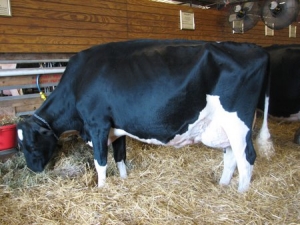Dairy Experts

Forages, corn silage and corn grain are low in yields and quality but high in price after a wet spring followed by a summer-long drought, said Mike Schutz. The combination is tough on animal health and on the bottom lines of dairy farms struggling to stay profitable.
"Because of the drought, corn and forage yields are down and silage is lower quality, but the costs remain high," Mr Schutz said.
"The per-ton value of silage is based on yields and corn prices. With corn trading above $6.50 per bushel, delivered silage prices are about $65 to $75 per ton despite the frequent lower quality. This is in comparison with the $30 to $40 per ton prices producers were paying in recent years."
Purdue Extension dairy specialist, Tamilee Nennich, said the fluctuating corn prices can make it difficult to determine fair prices for corn silage. To help producers plan and determine prices, there are corn silage value calculators available for producers. Purdue Extension's version is available by contacting Nennich at 765-494-4823 or tnennich@purdue.edu
Quality issues also have been a challenge this year. Much of the silage is low in starch, protein and energy, which have historically been supplemented with hay, soybean meal and corn grain. But those will be expensive alternatives this year.
Good quality hay above 160 in relative feed value - a dairy industry measurement indicating how well forages will be eaten and digested - is expensive and in short supply, Mr Schutz said.
Corn grain also has the potential for developing aflatoxins in dry conditions, compounds produced by a fungus and which can show up as a contaminant in milk. Aflatoxins result from a mold in corn that is most likely to grow in drought. Given the sporadic drought around the country, mr Schutz said there are indications that producers should keep on the lookout for aflatoxins that may be present in some of the corn. There have not yet been reports of aflatoxins in Indiana, but vigilance is good practice.
Aflatoxins are a concern for all livestock producers but particularly the dairy industry, where there is a zero tolerance level for the contaminant in milk.
"Total rations with as little as 20 parts per billion of aflatoxins could result in milk residues," Schutz said. "This tends not to be as much of an issue for corn silage, but it is an issue for corn grain."
He urged producers to have corn grain tested as a precaution.
Mr Schutz also said producers need to do everything in their power to protect their feed crops against loss and shrinkage. Monitoring moisture levels also is important.
When it comes to corn silage, producers need to make sure it's at an acceptable moisture before storing it and that the feed is packed well - something Mr Schutz said is critical in a year where dairy producers may be storing less.
If the silage will be stored outdoors, piles need to be covered immediately.
"Dairy producers really need to remove the opportunities for oxygen to get to the silage, and they can do that by covering piles and removing the excess air," Mr Schutz said.
"Replacements for corn and silage, such as distillers grains, alfalfa and other energy supplements, will be expensive, so farmers really need to monitor feed storage. Dry distillers grains can be affected by molds and aflatoxins, as well, so it's critical to keep an eye on those feeds, too."





















